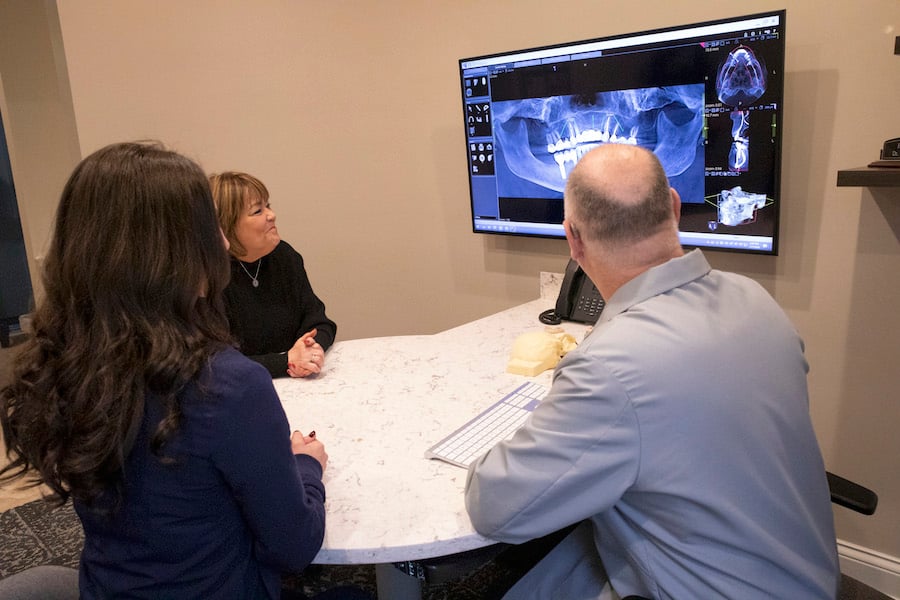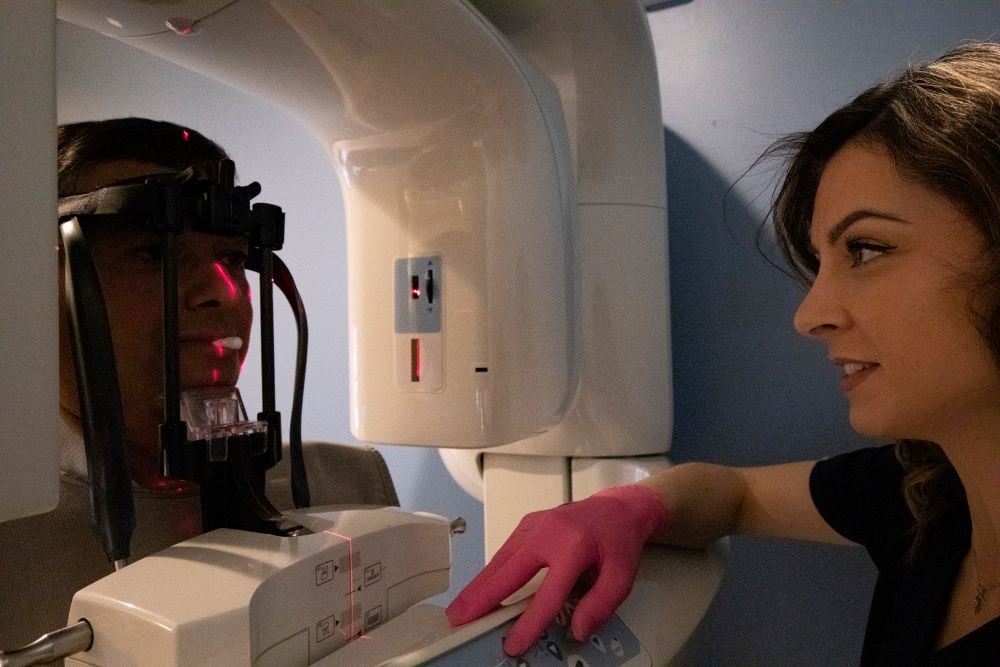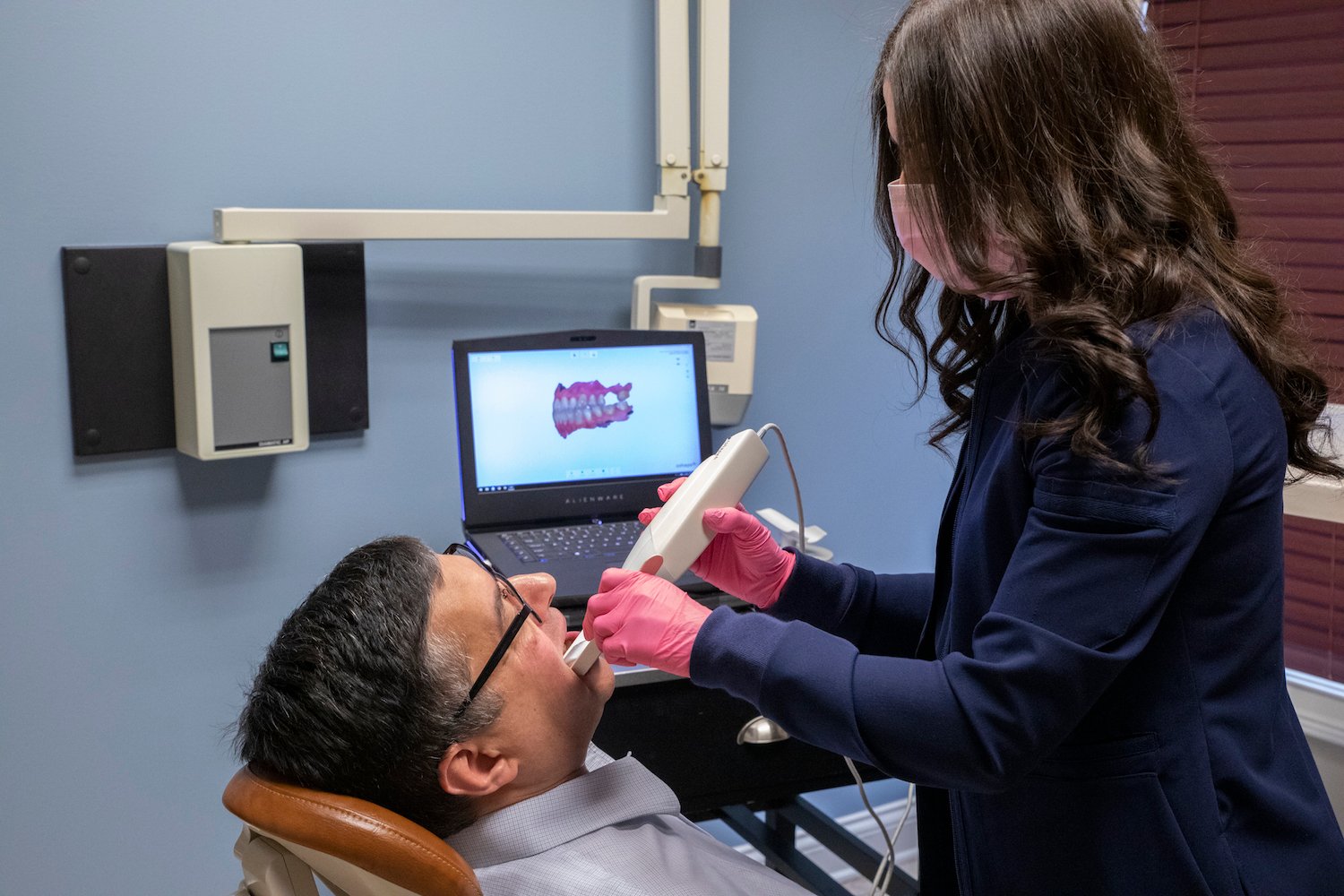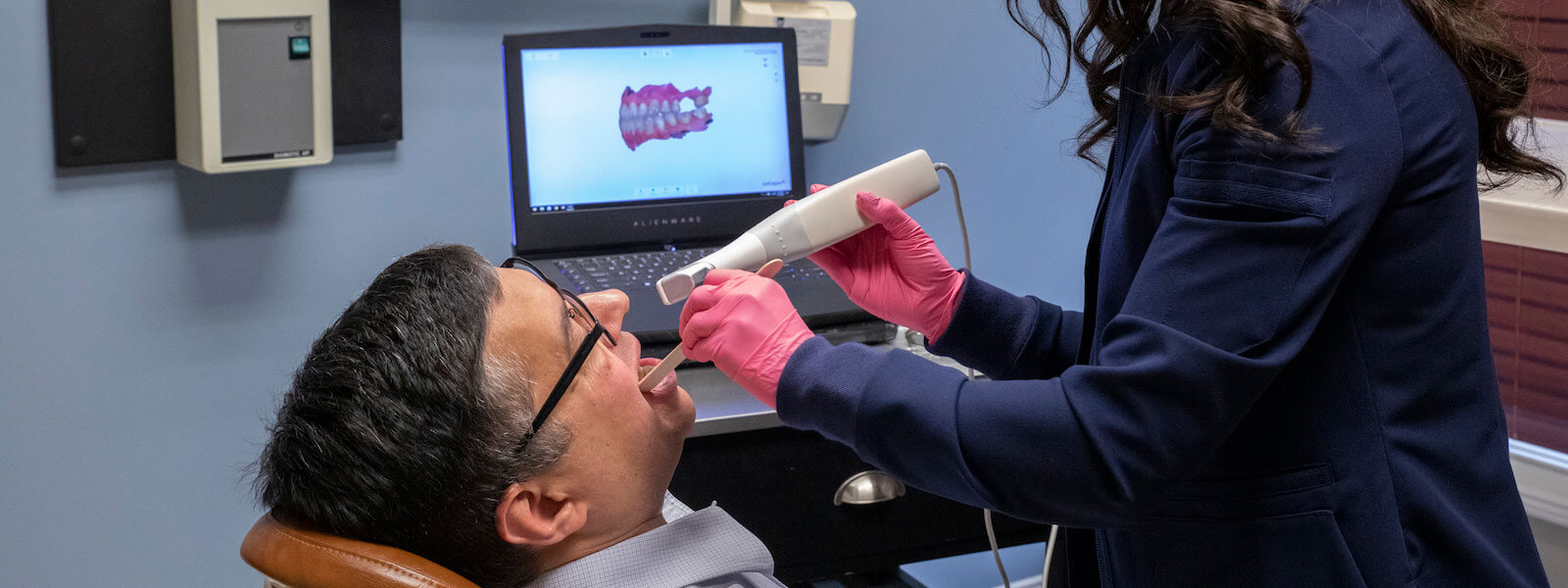what is digital dentistry?

Advantages of 3D x-rays
3D X-rays are dental CT scans known as Cone Beam Computed Tomography (CBCT). CBCT scans provide a three-dimensional image of a patient’s teeth and surrounding mouth structures, while using 100 times less radiation than conventional medical CT scans.
Digital 3D X-rays provide much more detailed and accurate information than the older, traditional X-rays that are only two-dimensional. They enable the oral surgeon to measure the size and shape of teeth and the jaw structure with precise accuracy. With ordinary 2D X-rays, dental professionals aren’t able to get a lot of the information that they want because they can’t adequately see vital structures such as the nerves, sinuses, and most importantly, the contour of the bone structure of the jaw.
3D X-rays give the oral surgeon the ability to clearly see the density and shape of the bone and the surrounding vital structures. That makes it much easier to design the ideal placement of a dental implant for the best possible outcome, with results that are both safer and aesthetically better.

Digital 3D X-rays are an important advance because they enable oral surgeons to make a correct and precise diagnosis. That alone is a major advantage since it reduces cost, time and discomfort for the patient. Also, starting with the right diagnosis generally always ensures that there will be fewer possible complications and better overall final results.
Digital X-rays that enable the oral surgeon to see and precisely measure vital structures in the mouth help to avoid potential complications that may result from poor implant placement, such as nerve damage or sinus infections. They also help the oral surgeon avoid placing the implant in less than an ideal position due to surprise angles or bone contours. This minimizes the risk of implant failure and the chance of getting a less aesthetically pleasing result.
The digital images also offer the benefit of improved patient education. The oral surgeon can show the patient the 3D X-ray images, making it easier for the patient to visualize and understand their issues and the proposed treatment plan.

advantages of digital impressions
Being able to make digital impressions offers several advantages over using the traditional material (what patients often refer to as “goop“) used for making dental impressions. Digital impressions are a technological advancement both in terms of accuracy and in terms of improving the patient’s experience.
There’s a lot of potential for error with the traditional impression method. For example, a bubble might form, either when the oral surgeon takes the impression or when the impression is used to create a model for the dental restoration. If something like that happens, then in order to avoid a poor fit with the restoration, the impression has to be remade. That involves more time and work for the oral surgeon, and it’s also an inconvenience and additional time requirement for the patient since they have to come back in to get the impression redone.
Digital impressions are a timesaver in any event because they can be done in just a few minutes, whereas with the traditional impression material the patient has to sit there with the “goop” in their mouth.
Using a digital impression, also known as an intraoral scan, the oral surgeon can immediately see on the screen if there are any inaccuracies and take another impression in just a few seconds, if necessary. You can actually see the patient's mouth, often in full color, immediately on the screen.
This is also helpful to the patient because the oral surgeon can immediately show them what the problems are, so they have a better understanding of exactly how the treatment will benefit them, both functionally and in terms of getting an ideal cosmetic outcome.
The essential advantages of digital dentistry are significant, obvious, and undeniable. Using digital technology shortens treatment time, it requires fewer visits for the patient, and it leads to a better final result both functionally and cosmetically, and with fewer complications.
If you're ready to learn about the difference that advanced dental technology provides, book your consultation with North Shore Smile Surgery today!
This blog post is based on an excerpt from Dr. Scott Frank's chapter in the book, "A Reason to Smile: Fixing Broken Confidence with Cosmetic Dentistry."



